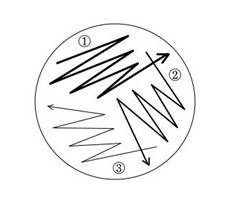MG1655 大肠杆菌
产品名称: MG1655 大肠杆菌
英文名称: MG1655 大肠杆菌
产品编号: Biovector512362
产品价格: 0
产品产地: Biovector NTCC Inc. USA
品牌商标: Biovector, Addgene, ATCC, Invi
更新时间: null
使用范围: null
- 联系人 :
- 地址 : 北京市西直门外大街19号BioVector NTCC典型培养物保藏中心
- 邮编 : 100080
- 所在区域 : 北京
- 电话 : 189****8599 点击查看
- 传真 : 点击查看
- 邮箱 : Biovector@163.com
|
Order ID |
Name |
Description |
|
NTCC510822 |
E.coli MG1655 strain |
500uL, Storage:4℃ |
|
Organism: |
Escherichia coli (Migula) Castellani and Chalmers |
|
|
Designations: |
MG1655 |
|
|
Isolation: |
derived from existing strain (derived from parent strain W1485 by acridine orange curing of the F plasmid) |
|
|
Antigenic Properties: |
serotype OR:H48:K- |
|
|
Genotype: |
F- lambda- ilvG- rfb-50 rph-1 |
|
|
Serotype: OR:H48:K- This strain was sequenced by the Blattner laboratory because it approximates wild-type E. coli and "has been maintained as a laboratory strain with minimal genetic manipulation, having only been cured of the temperate bacteriophage lambda and F plasmid by means of ultraviolet light and acridine orange, respectively." (Blattner, et al. 1997). The mutations listed in the genotype are present in most K-12 strains and were probably acquired early in the history of the laboratory strain. A frameshift at the end of rph results in decreased pyrE expression and a mild pyrimidine starvation, such that the strain grows 10 to 15% more slowly in pyrimidine-free medium than in medium containing uracil (Jensen 1993). The ilvG- mutation is a frameshift that knocks out acetohydroxy acid synthase II (Lawther, et al. 1982). The rfb-50 mutation is an IS5 insertion that results in the absence of O-antigen synthesis (Liu and Reeves 1994). MG1655 was derived and named by Mark Guyer from strain W1485, which was derived in Joshua Lederbergs lab from a stab-culture descendant of the original K-12 isolate. This original E. coli strain K-12 was obtained from a stool sample of a diphtheria patient in Palo Alto, CA in 1922 (Bachmann, B., pp. 2460-2488 in Neidhardt et al.1996, Escherichia coli and Salmonella: Cellular and Molecular Biology, ASM Press). Media and growth curves MG1655 grows on LB and M9 minimal medium (+ Glucose + 1ug/ml thiamine). In doing experiments with microarrays, we sought a medium that was both defined and reproducible (unlike LB), yet supported fast growth rates. We now use Neidhardts MOPS-based rich defined medium (MOPS-RDM). We also sought a commercially available rich defined medium, and finding none tried to grow MG1655 on a medium sold for mammalian cell culture. It grows quite well, but we decided to stick with Neidhardts medium because it shows a sharper transition to stationary phase. |
|
 Recovery
Recovery
- Obtain an LB agar plate with the appropriate antibiotic.
- Using a sterile pipette tip, touch the bacteria growing within the punctured area of the stab culture. (A sterilized wire loop or sterile toothpick can be used in place of a sterile pipette tip.)
- Run this tip lightly over a section of the plate, as shown in the figure, to create streak #1.
- Using another sterile pipette tip, pass through streak #1 and spread the bacteria over a second section of the plate, to create streak #2.
- Using a third sterile pipette tip, pass through streak #2 and spread the bacteria over the last section of the plate, to create streak #3.
- Grow overnight in a 37 o C incubator (unless a different growth temperature is indicated on the plasmid datasheet).
- In the morning, single colonies should be visible. If the bacterial growth is too dense, re-streak onto a new agar plate to obtain single colonies.
